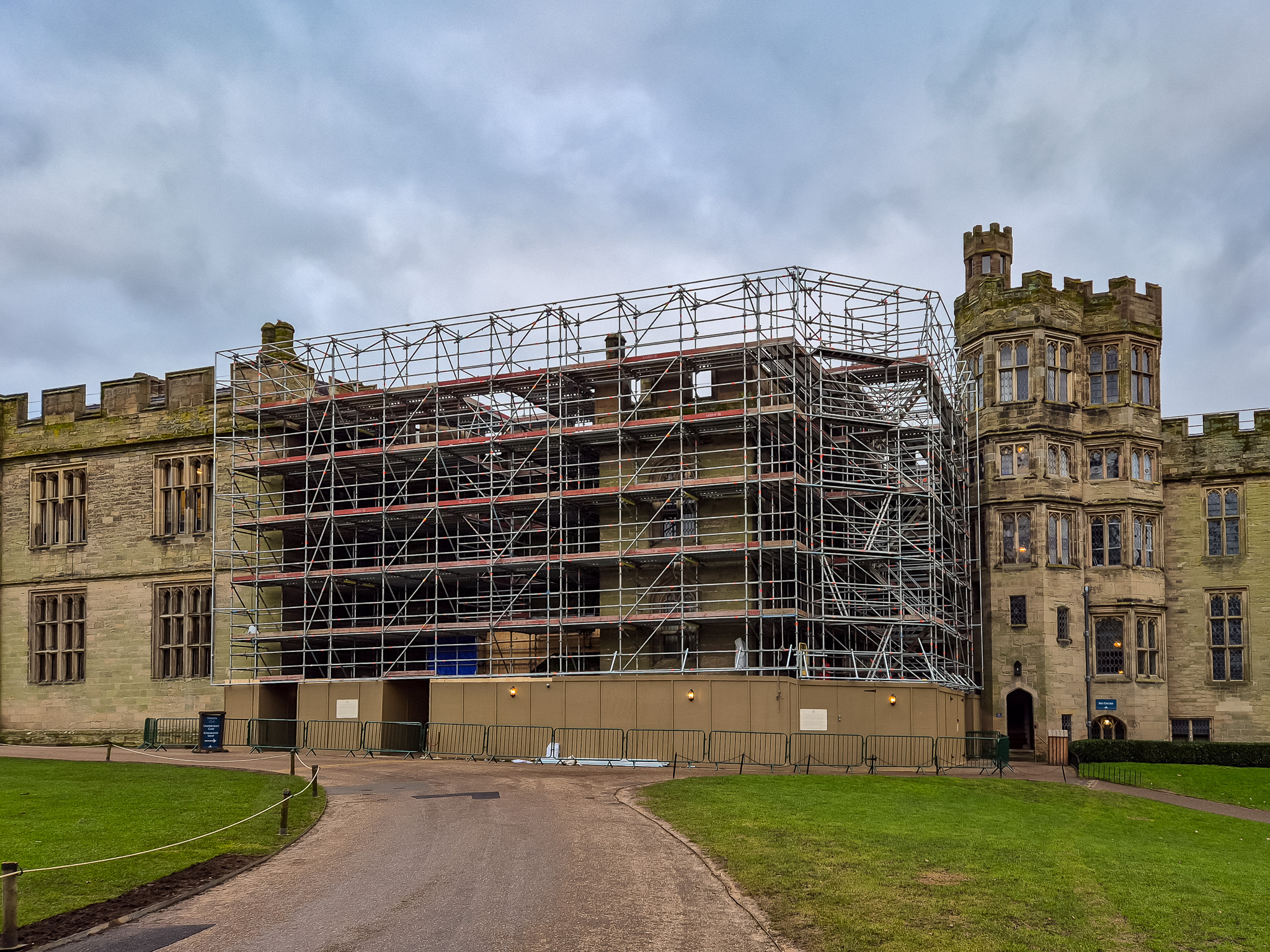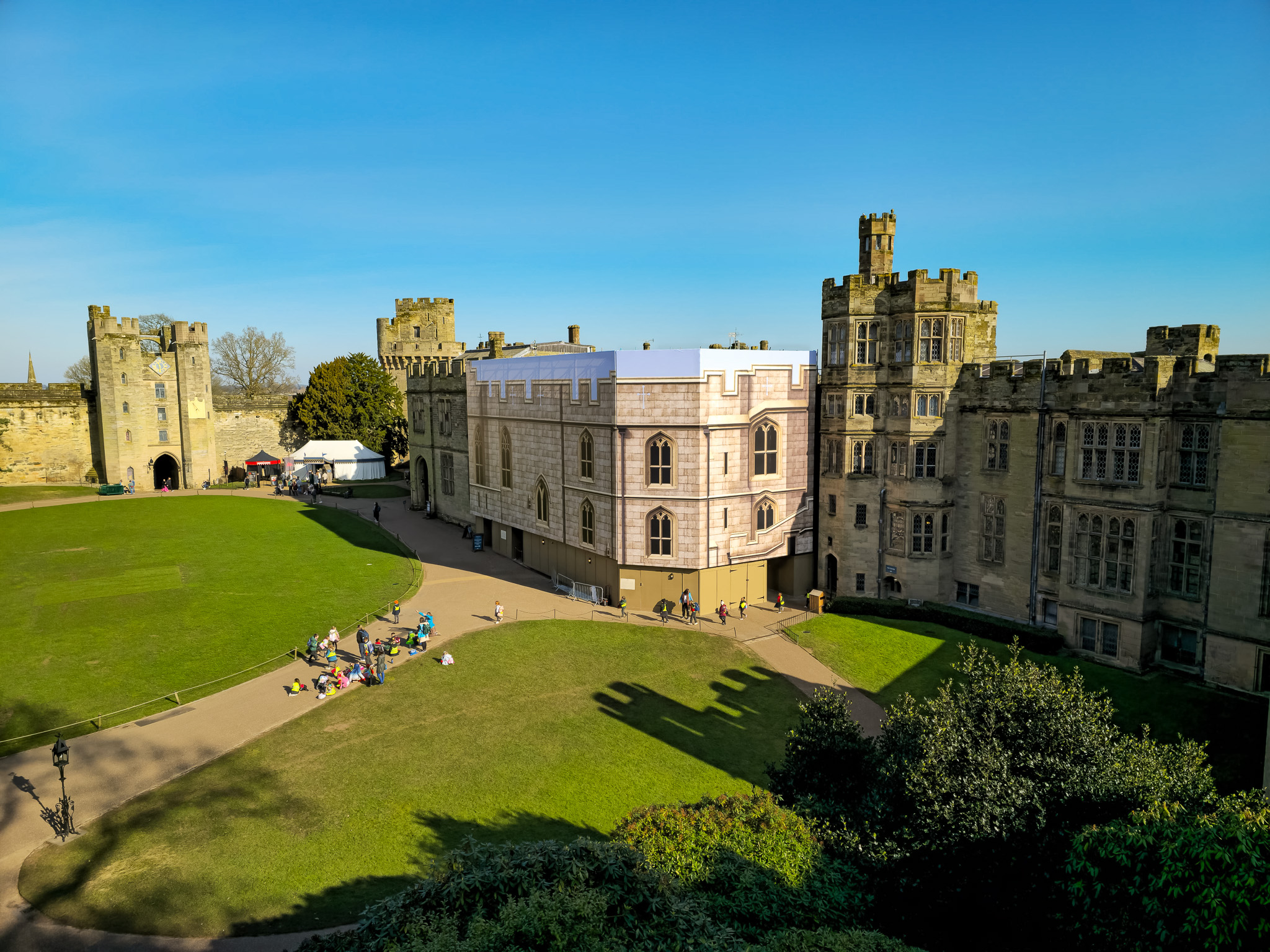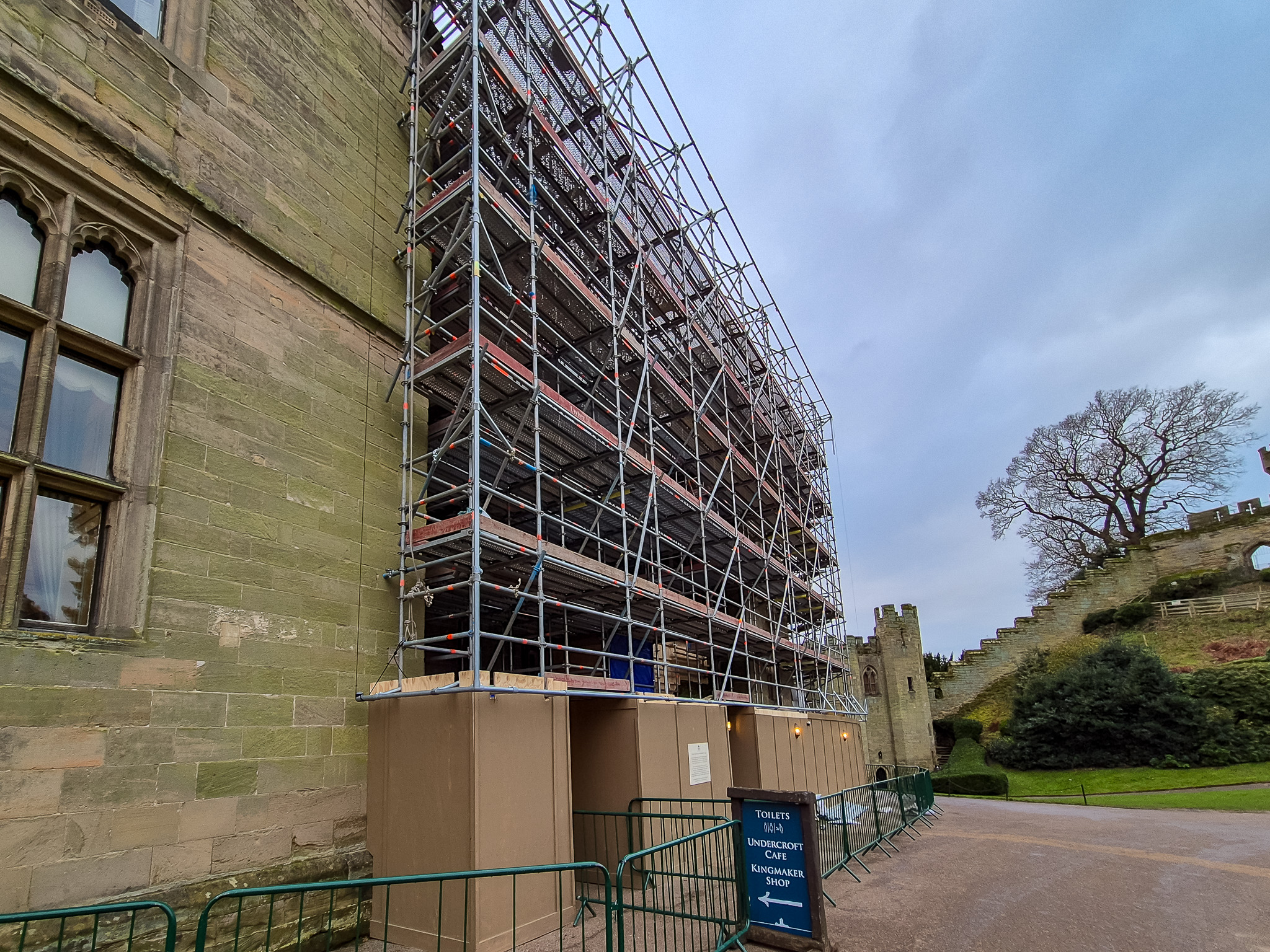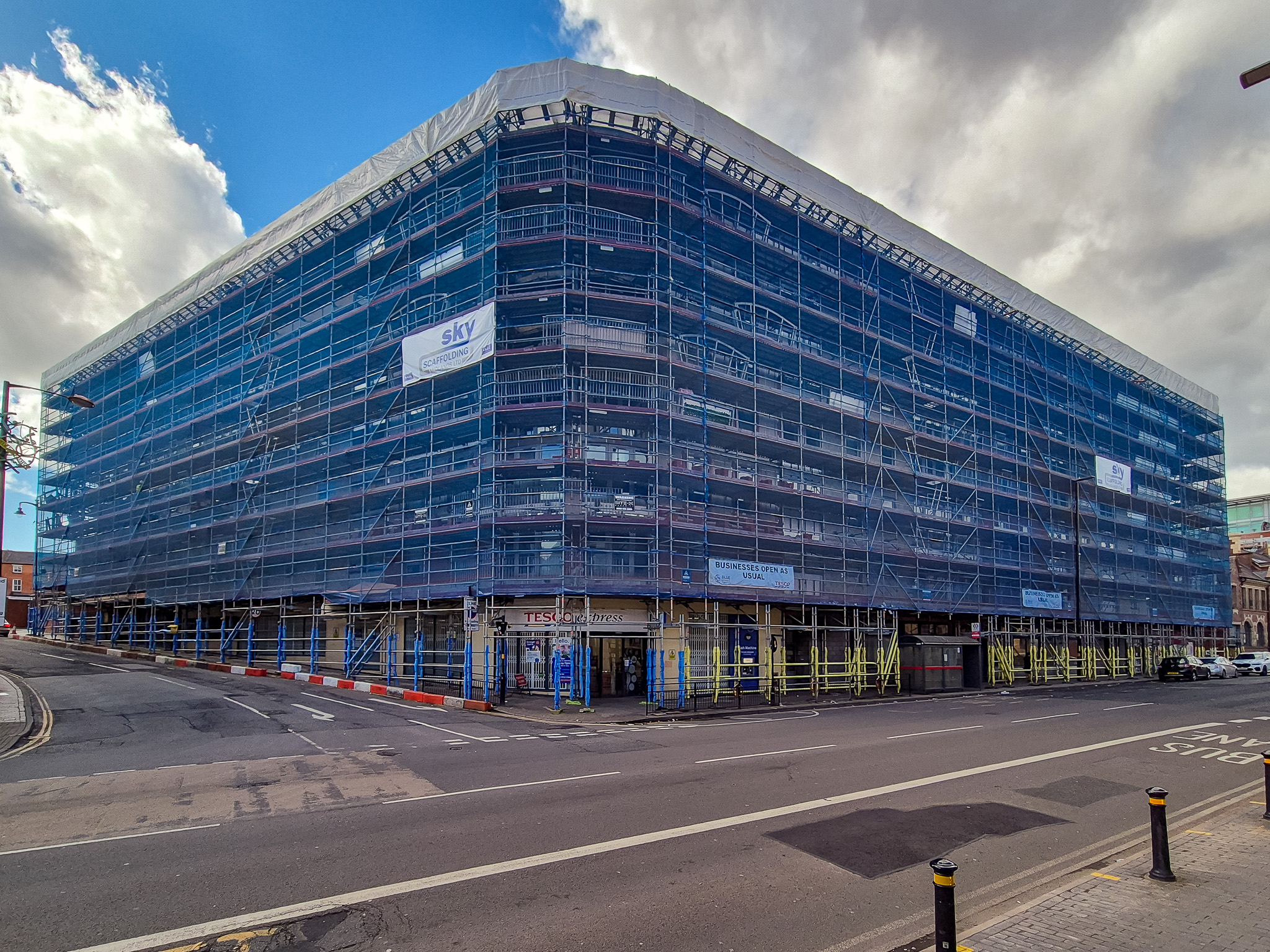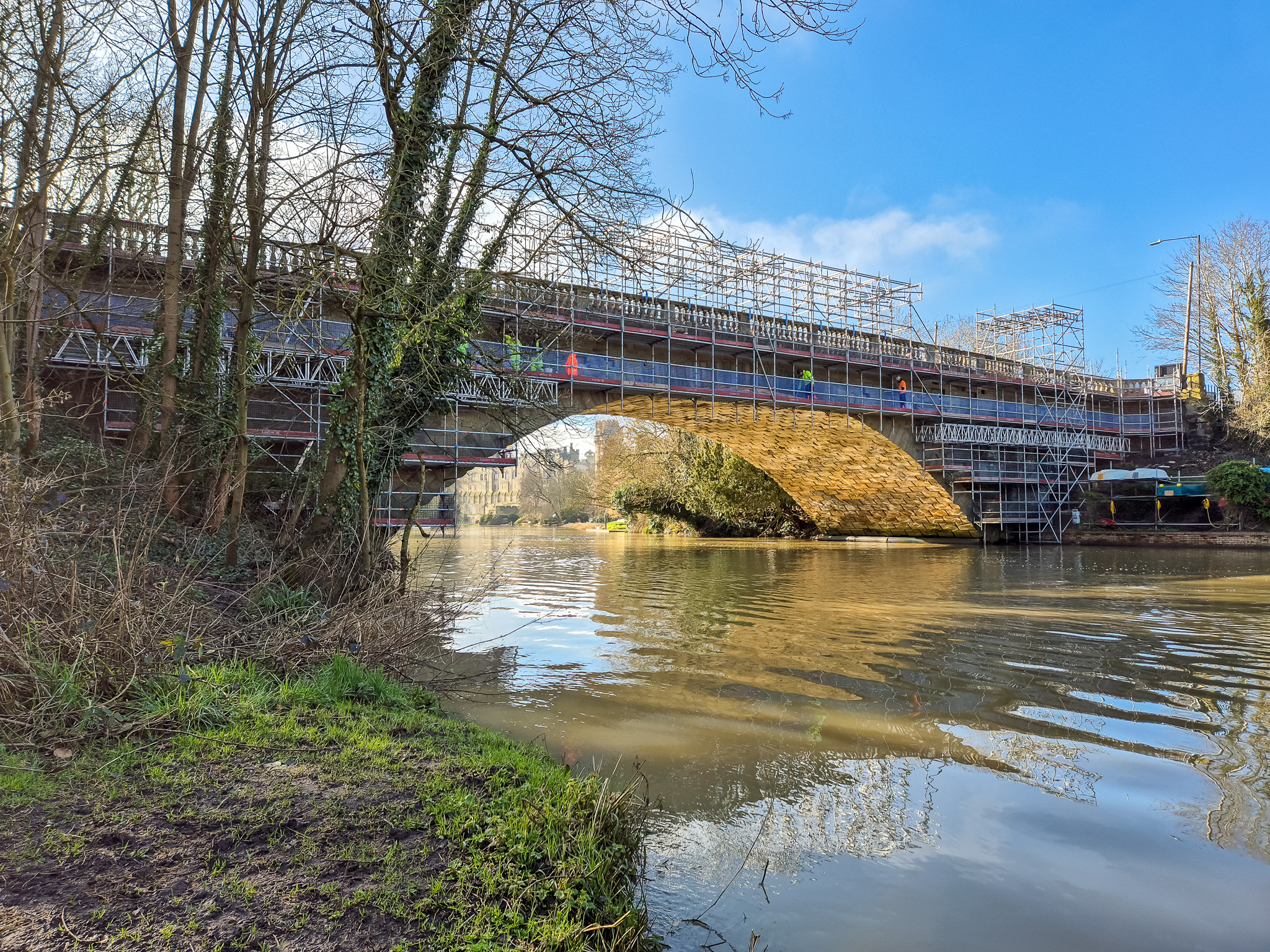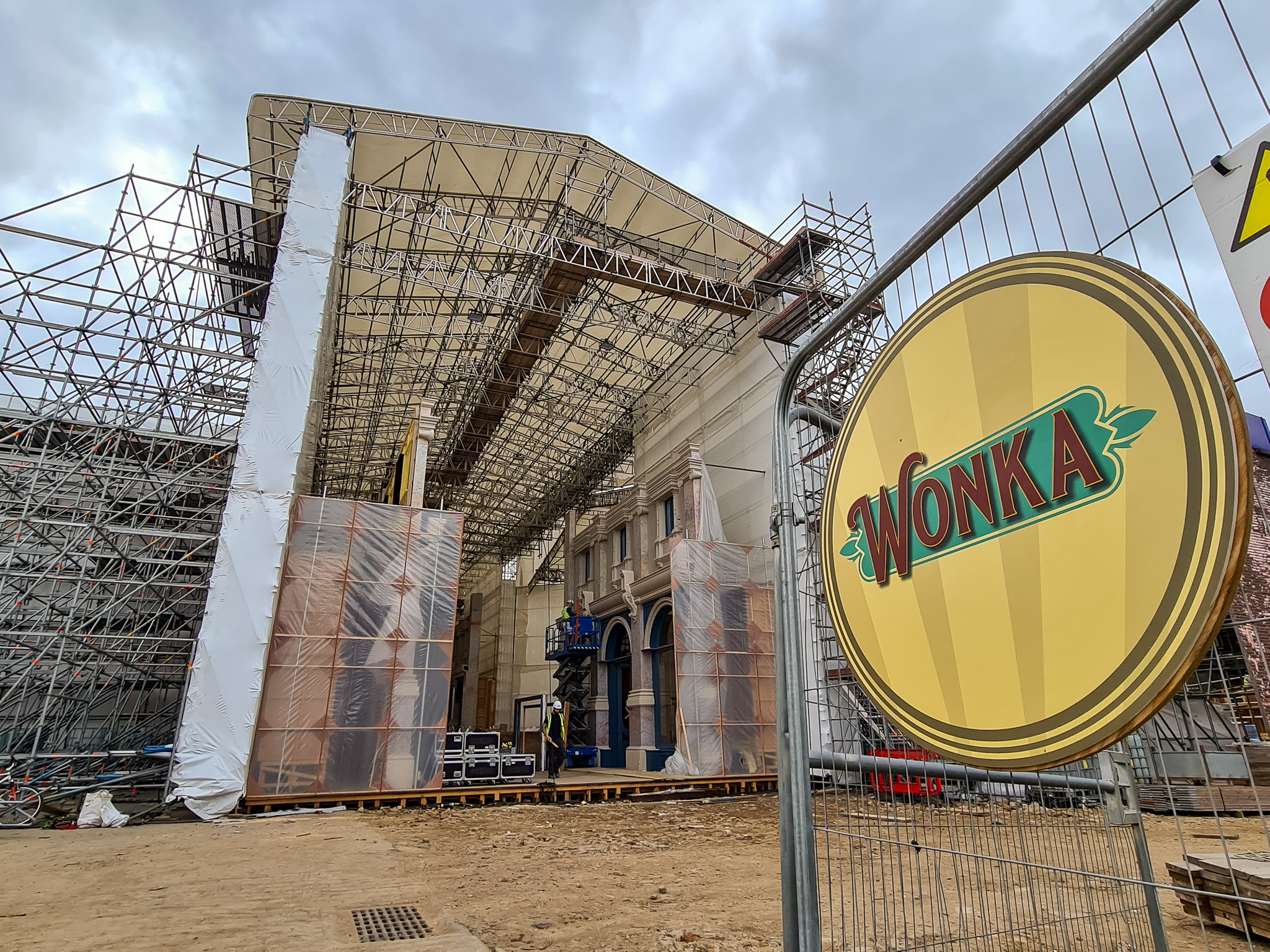A 20-week stonework repair and aesthetic restoration project was undertaken on the domestic range at Warwick Castle.
To minimise the visual impact of the scaffolding on this historic landmark, a bespoke digitally printed scaffold wrap was installed. Designed to blend seamlessly with the castle’s architecture, the wrap ensured that visitors could continue to enjoy an authentic experience while essential conservation work was carried out.
Given Warwick Castle’s status as a major visitor attraction, maintaining its visual appeal throughout the restoration was a key consideration.
The scaffold wrap, designed and provided by Lavastar, was custom-printed to replicate the castle’s façade, ensuring the structure remained in keeping with its surroundings. This innovative approach allowed the castle to retain its aesthetic charm while work progressed behind the scenes.
Beyond its visual benefits, the wrap also served a practical purpose. It acted as a dust containment measure, reducing the spread of debris from the stonework repairs and helping to protect both visitors and the environment. Additionally, it provided an extra barrier to restrict unauthorised access to the scaffold, further enhancing site safety.
Scaffold Design and Installation
The scaffold itself stood 15 metres high and was carefully designed to minimise its impact on the historic structure, with minimal ties into the building. A staircase access system and a rack-and-pinion hoist facilitated safe movement of personnel and materials. The wrap was securely fitted around the scaffold, ensuring a taut and realistic appearance that seamlessly blended with the existing stonework.
Challenges and Solutions
One of the biggest challenges was maintaining visitor experience while ensuring a safe and efficient work environment. As the castle remained open throughout the project, the wrap played a key role in reducing the visual disruption, preserving the castle’s iconic appearance in photographs and promotional material.
Pedestrian safety was another critical factor, requiring careful planning to keep walkways clear while providing secure access for contractors. The scaffold wrap contributed to dust containment, helping to limit the impact of stone-cutting and restoration work on the public areas of the castle.
The project was completed on schedule, with the scaffold wrap proving to be an effective solution for minimising the aesthetic and environmental impact of the restoration. By integrating a digital print that replicated the castle’s façade, the wrap helped preserve the visual integrity of Warwick Castle while essential conservation work was carried out.
This project showcased how modern solutions, such as digitally printed scaffold wraps, can be used to enhance restoration projects in historic settings—ensuring preservation efforts remain discreet while maintaining visitor experience and site safety.
